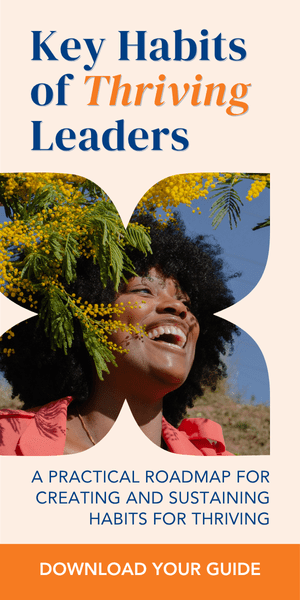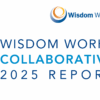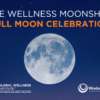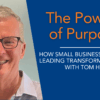Despite the backdrop of the U.S. Presidential election results unfolding at the same time, this year’s Global Wellness Summit was another dynamic and engaging event.
The Global Wellness Summit is an annual four-day gathering that brings together leaders from business, government, academia, and science to exchange ideas and shape the future of the interconnected world of wellness. This year, the event took place in the stunning landscape of Scotland—a country steeped in tradition, where clan chiefs, kings, religious leaders, and nobles have long sought refuge in the tranquil countryside to rejuvenate mind, body, and spirit. It was hosted in the historic seaside town of St. Andrews, renowned not only for its world-class golf courses but also for its prestigious university and interesting medieval ruins.
I started my visit to this charming town with a leisurely walk around its streets, eventually making my way through the iconic Old Course— affectionately known as the “Grand Old Lady.” At nearly 475 years old, she’s regarded as the birthplace of golf, making her a truly historic landmark. Yes, I walked on the course (without playing golf)! It felt like I was getting away with something, but the beauty of the Old Course is that every Sunday, it opens to the public as a park for everyone to enjoy.
From its diverse attendees to its thought-provoking presentations, each Summit is a truly global experience, with every event centered around a unique theme. This year’s theme was a watershed moment for wellness. This theme allowed attendees to explore how the wellness industry is at a pivotal moment for growth and disruption globally, plus take a deep dive into the topic of water, from the explosion of interest in a new breed of bathing, sauna, hot springs, cold immersion, and wild swimming experiences to the water-hungry industries waking up to their role to protect water resources and create a sustainable “blue economy.”
TEN INSPIRATIONS FROM THE GLOBAL WELLNESS SUMMIT
In the spirit of my 10th Summit, here are ten (among many) ways this experience inspired me:
- The breathtaking videography of Louie Schwartzberg, founder of Moving Art, beautifully showcased water as a powerful force of connection and unity—both within us and between us. Through his work, Louie invites us to see the world with renewed wonder, and one of its greatest marvels is water, in all its forms.
- Nina Kohler, strategy and design leader at the hospitality group of the global manufacturer Kohler, shared practical examples of how the company champions gracious, healthy, and sustainable lives. You’ll find details about their commitment to help employees, customers, and partners protect the planet and increase wellbeing in the company’s most recent impact report.
- Global Wellness Institute senior researchers Ophelia Yeung and Katherine Johnston unveiled new economic insights about the global wellness economy, revealing that it reached a record $6.3 trillion in 2023 and is projected to approach $9 trillion by 2028. A major milestone! The wellness industry is now approximately four times larger than global pharmaceuticals ($1.6 trillion) and nearly 60% the size of total consumer health expenditures ($10.6 trillion).
- Carl Ganter, leader of the global water research and resource nonprofit Circle of Blue, advocated that not addressing our water challenges will undermine progress on all the United Nation Sustainable Development Goals. Many of the world’s largest cities today are already inching closer to Day Zero, the critical point at which a city’s water supply is forecasted to be near depletion, leaving water taps dry and communities in crisis.
- Sarah Brightwood presented the innovative “water healing plant” that Rancho la Puerta is developing to secure water sovereignty for the wellness-focused village and its surrounding communities. Every day, this regenerative facility will reclaim over half a million gallons of municipal wastewater from the city of Tecate using passive, sustainable methods—while producing zero methane gas and generating both energy and compost. The outcome will be clean, safe water that meets stringent drinking water standards.
- Luuk Melisse and Gabirel Olszewski, founders of Sanctum, led a profound movement practice with the Summit’s close to 500 attendees. The practice blended Easter wellbeing principles with Western modern fitness methods to help us experience deep connection, empower our bodies, and expand our minds.
- CEO of Ageist David Stewart disclosed new research showing that optimists—those who maintain a sense of possibility for the future—are more apt to use fitness trackers, engage in beneficial social circles, be more financially prepared to live to 100, and much more. The research underscored that how we behave today is deeply influenced by how we perceive our future lives.
- Tianren Culture Cofounder Victor Koo reimagined AI as a partner in fostering compassion worldwide. Believing that we must learn to “be like water” in navigating life’s complexities, Koo envisioned AI technologies evolving from generative to regenerative, from artificial to nature, and from intelligence to wisdom.
- Remedy Place Founder Dr. Jonathan Leary and WorldSprings CEO Christopher Barrett shared how they are intentionally designing spaces to promote social wellness—where people authentically connect through personal wellness practices, like ice baths and saunas, done together. This concept of social self-care encourages people to nurture their wellbeing while engaging in relationships and work.
- Cathy Feliciano-Chon, Managing Partner at Finn Partners, and Jeremy Jauncey, CEO of Beautiful Destinations, highlighted key trends shaping the global wellness economy. For example, generational boundaries are blurring in the pursuit of wellness, with 60-year-olds adopting lifestyles typically associated with 30-year-olds, and 30-year-olds increasingly focused on longevity. Additionally, retirement is no longer seen as a singular milestone, but as a series of life choices that enable people to seek new experiences as they age. Adding to those trends, University of Oxford Wellbeing Research Center Professor of Economics Jan-Emmanuel De Neve offered workplace wellbeing insights from the largest data set of its kind (over 15 million surveys) in partnership with Indeed. The findings reveal that the most successful organizations aren’t prioritizing profit over people—they profit by prioritizing people.
Given the stress of the U.S. Presidential election and its far-reaching ramifications—nationally, globally, and in our organizations, communities, and personal lives—I found myself most inspired by this gathering of old friends and new colleagues, all united in their commitment to wellness leadership on a global scale. Both individually or together, I believe that focusing on living and leading from a place of stress resilience, wellbeing, and growth—true thriving—provides the best path forward for confronting our complexities and demands with the inner resources we need to succeed.






